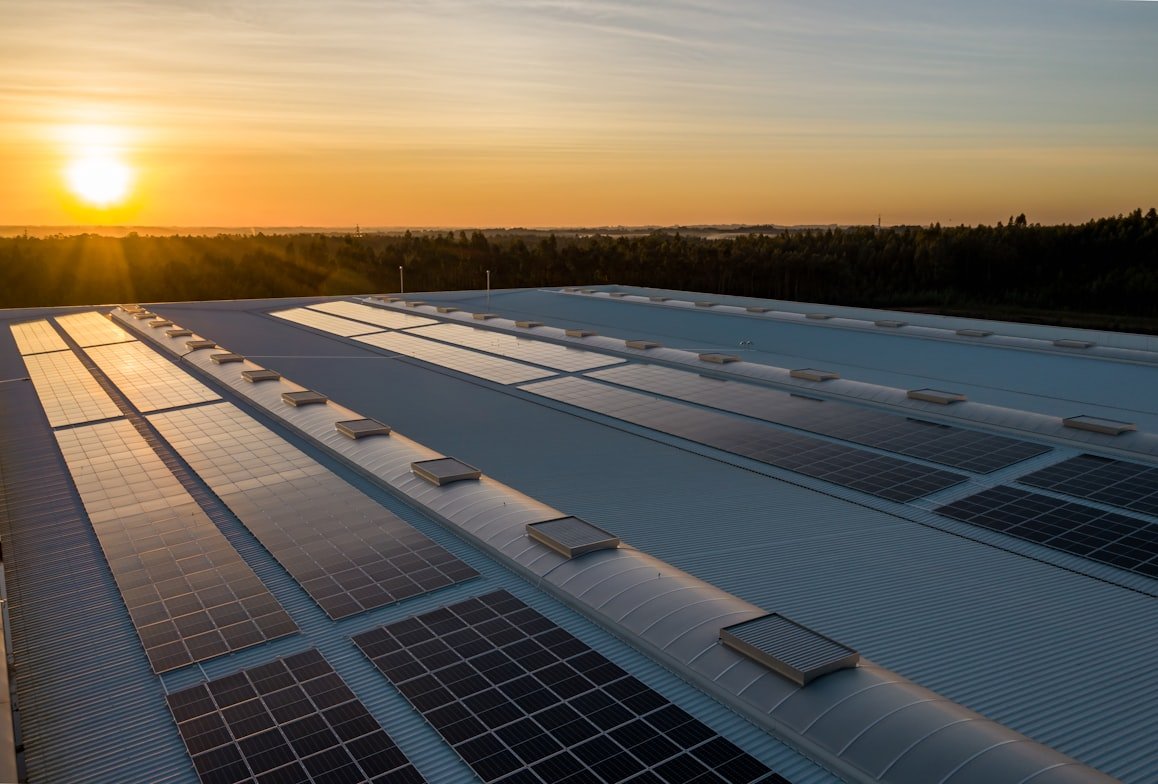Solar Panel for Home in India 2025: Price, Subsidy & Complete Guide

Look, I’ll be honest with you.
When my electricity bill hit ₹8,500 last summer, I knew something had to change. The AC was running non-stop, and I felt like I was basically funding my electricity company’s next vacation.
That’s when I started seriously looking into solar panels for my home.
And here’s what I discovered: Going solar in India right now is probably one of the smartest financial decisions you can make. Especially with the government subsidies available in 2025.
But (and this is a big but), the amount of confusing information out there is overwhelming. Different vendors quote wildly different prices. Everyone claims their panels are “the best.” And don’t even get me started on trying to understand the subsidy application process.
So in this guide, I’m going to walk you through everything I learned – the real costs, how much you can actually save, and most importantly, how to avoid the mistakes I almost made.
Let’s dive in.
Why Solar Makes Sense for Indian Homes Right Now
Think about your electricity bill for a second.
Five years ago, you were probably paying ₹2,000-₹3,000 per month. Today? It’s likely doubled. And it’s not stopping there. Electricity tariffs in India have been increasing at roughly 6-8% annually.
Here’s the thing that changed my perspective: Solar panels are essentially a 25-year insurance policy against rising electricity costs.
You pay once upfront (and the government subsidizes a chunk of it), and then you’re generating free electricity for the next quarter-century. The math is pretty compelling when you think about it that way.
Plus, there’s something deeply satisfying about watching your meter run backward when your panels are pumping out power. I’m not going to lie – I check my solar app way more often than I should.
Understanding Solar System Types (Without the Technical Jargon)
Before we talk money, you need to know there are three types of solar systems. And choosing the wrong one is the #1 mistake I see people make.
On-Grid Systems are connected to your electricity supply. During the day, your panels generate power. Use what you need, and the excess goes back to the grid (they credit your bill). At night, you draw from the grid like normal.
Think of it like this: It’s a two-way street with your electricity company.
The advantage? It’s cheaper because you don’t need batteries. The downside? When there’s a power cut, your solar system also shuts down. Yeah, I know – seems weird, but it’s a safety feature.
Off-Grid Systems are completely independent. You’re storing all that solar power in batteries for nighttime use. Perfect if you live in an area with frequent power cuts or want complete energy independence.
But batteries are expensive. We’re talking an extra ₹80,000-₹1,50,000 depending on capacity.
Hybrid Systems give you the best of both worlds. Connected to the grid, but with battery backup. They cost more upfront, but honestly? If your area has regular power cuts, this is what I’d recommend.
For most urban Indian homes with reliable grid power, on-grid makes the most sense. That’s what I went with, and I haven’t regretted it.
The Real Cost of Solar Panels in India (2025 Breakdown)
Alright, let’s talk numbers. Because this is probably why you’re here.
Here’s what solar systems actually cost in India right now:
- 1kW system: ₹45,000 – ₹60,000
- 3kW system: ₹1,35,000 – ₹1,80,000
- 5kW system: ₹2,25,000 – ₹3,00,000
- 10kW system: ₹4,50,000 – ₹6,00,000
Now before you panic at those numbers, remember – you’re getting a significant government subsidy (more on that in a minute).
The price range exists because of quality differences. A Tier-1 brand like Tata Power Solar or Adani will cost more than a local brand. But here’s my advice: Don’t cheap out on panels. This is a 25-year investment.
I made the mistake of getting quotes from five different vendors, and the prices varied by almost 40%. Some were including installation, others weren’t. Some quoted for monocrystalline panels, others for polycrystalline.
Pro tip: Always ask for a detailed, itemized quote. And make sure it includes installation, net meter, and all electrical work. Otherwise, you’re comparing apples to oranges.
How Much Solar Capacity Do You Actually Need?
This is simpler than you think.
Grab your latest electricity bill. Look for the “units consumed” – let’s say you use 300 units per month.
Here’s the formula I used: Monthly units ÷ 120 = Required system size in kW
So, 300 units ÷ 120 = 2.5kW system
Why 120? Because a 1kW system generates roughly 4 units per day in India (that’s 120 units per month). Of course, this varies slightly by location – Rajasthan gets more sun than Kerala – but it’s a solid rule of thumb.
For most 2-3 BHK apartments consuming 200-400 units monthly, a 3kW system is the sweet spot. Independent houses with higher consumption might need 5-7kW.
One thing that surprised me: You don’t need to generate 100% of your electricity needs. Even a system that covers 70-80% of your consumption makes financial sense because you’re offsetting your highest tariff slabs.
The Government Subsidy: Your Secret Weapon
Okay, this is where it gets exciting.
The Ministry of New and Renewable Energy (MNRE) is currently offering subsidies that can reduce your costs by 40-60%. Yes, you read that right.
Here’s the breakdown:
- First 3kW: ₹18,000 per kW subsidy
- Above 3kW (up to 10kW): ₹9,000 per kW subsidy
Let me show you with a real example:
For a 5kW system:
- First 3kW: 3 × ₹18,000 = ₹54,000
- Next 2kW: 2 × ₹9,000 = ₹18,000
- Total subsidy = ₹72,000
So if your 5kW system costs ₹2,50,000, you’re paying just ₹1,78,000 after subsidy. Suddenly, it’s a lot more affordable, right?
But here’s the catch: You must use an MNRE-empanelled vendor to get the subsidy. Don’t let any vendor tell you they can “arrange” the subsidy if they’re not officially empanelled. I’ve heard horror stories of people losing their subsidy eligibility because of this.
The subsidy is credited directly to your account after installation and inspection. In my case, it took about 45 days post-commissioning. Some states are faster, some slower.
What About Space? Will Your Roof Be Enough?
Here’s a quick reality check: You need approximately 100 square feet of shadow-free roof space per kW.
So a 3kW system needs about 300 square feet. Most apartment terraces or independent house roofs have this easily.
The key word is “shadow-free.” That water tank casting a shadow at 2 PM? That’s going to reduce your output. Trees, neighboring buildings, your own parapet walls – they all matter.
During my site survey, the installer pointed out a vent pipe that was creating afternoon shadows. We repositioned four panels, and it made a 5% difference in generation. Small things matter.
Also, South-facing roofs are ideal in India, but East-West orientations work fine too. You’ll lose maybe 10-15% efficiency, but it’s not a dealbreaker.
The ROI That Actually Makes Sense
Let’s get to everyone’s favorite question: When do I break even?
With current subsidies and electricity rates, most homeowners see a payback period of 4-6 years.
Here’s my math:
- System cost after subsidy: ₹1,80,000 (5kW)
- Monthly electricity savings: ₹3,500
- Annual savings: ₹42,000
- Payback period: ~4.3 years
After that? Pure profit. For the next 20+ years, you’re generating free electricity while your neighbors watch their bills climb.
But here’s what makes it even better: You’re locked in at today’s generation cost. While electricity tariffs increase 6-8% annually, your cost per unit stays at zero.
Think of solar as buying 25 years’ worth of electricity at today’s rates. When you frame it that way, the decision becomes obvious.
The Installation Journey: What to Expect
The actual installation is surprisingly quick. Mine took six days from start to finish.
Day 1-2: They installed the mounting structure (basically the framework that holds the panels). Expect some drilling and noise.
Day 3-4: Panel installation and wiring. This is when it starts looking real. I probably took 50 photos during this phase.
Day 5: Inverter and net meter setup. The inverter is the brain of your system – it converts DC to AC power.
Day 6-7: Testing, commissioning, and showing you how the monitoring app works.
The only hiccup I faced was waiting for the net meter approval from my electricity company (DISCOM). The installation was done, but I couldn’t connect to the grid for two weeks. This varies by state – some are super efficient, others… not so much.
Choosing the Right Brand: My Honest Take
I spent way too much time researching brands. Here’s what actually matters:
- BIS certification (mandatory)
- 25-year performance warranty (standard in the industry)
- Local after-sales support (super important)
The big Indian names – Tata Power Solar, Adani Solar, Waaree, Vikram Solar – they’re all solid. I went with Adani, my neighbor chose Tata. We’re both happy.
Monocrystalline panels cost about 10-15% more than polycrystalline but are more efficient. In space-constrained installations, that efficiency matters. If you have plenty of roof space, polycrystalline works fine and saves money.
Here’s my unpopular opinion: Don’t obsess over getting the absolute highest efficiency panels. A 20% efficient panel vs. a 22% efficient panel won’t dramatically change your life. Focus on warranty, brand reliability, and after-sales service instead.
Maintenance: Less Hassle Than You Think
I thought I’d be up on the roof every weekend cleaning panels. Reality? I clean them maybe once a month, and that’s just hosing them down.
During monsoon, rain does most of the cleaning. In dusty months, a professional cleaning twice a year (costs around ₹1,500-₹2,000) is enough.
The monitoring app alerts me if generation drops suddenly. I check it weekly, mostly out of habit now. It’s oddly satisfying watching your system’s lifetime generation counter tick up.
Conclusion Final Thoughts: Should You Go Solar?
Here’s my straight answer: If you’re a homeowner planning to stay in the same place for at least 5-7 years, going solar is a no-brainer financially.
The subsidies are generous right now. Electricity costs keep rising. And the technology has matured to the point where it’s reliable and low-maintenance.
My only regret? I didn’t do it sooner.
Start by getting three quotes from MNRE-empanelled vendors. Ask them to visit your site. Compare not just on price, but on component quality and what’s included.
And remember – you’re not just installing solar panels. You’re taking control of your electricity costs for the next 25 years.
That’s pretty powerful when you think about it.

